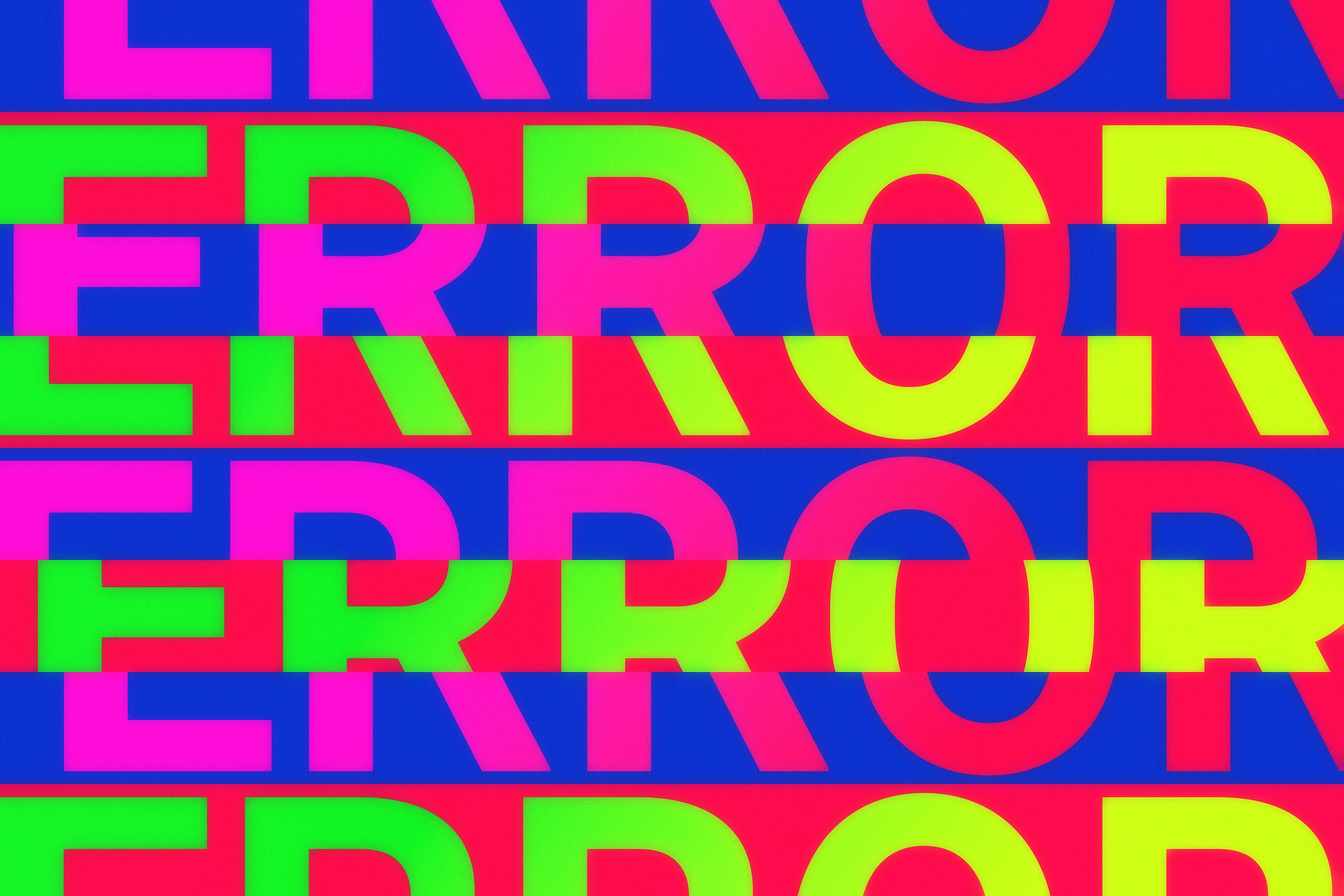The essential art of making mistakes
Creativity is often defined by accident. We don’t need AI to be better; we need it to be worse.
One of the best lessons I learned early on in my creative career was how important it was to not worry about making mistakes; better to embrace them. Not just from the perspective of trial and error to improve my skill set, but sometimes the errors I made were better than any of the original ideas in my head. Making mistakes is being creative.
My greatest disappointment with Generative AI to date is that it’s not weird enough. Aside from my many ethical concerns with the technology, I’ve found my (admittedly limited) personal experiments with GenAI to be overwhelmingly underwhelming from a creative perspective. The artwork I have created to date has been so literal, with any variations from the theme looking more like technical glitches to fix than interesting avenues to explore. It’s so boringly predictable. So meh.
Of course, this could be completely on me. Maybe I’m disappointed because I don’t understand how to write the right prompts to get the results I want. But that’s still a problem because I don’t always know what I want. That’s literally why I experiment. Experimentation is essential to the creative process, and making mistakes doubly so because it’s often the accidents that lead to something interesting.
I recently spent some time looking back at some of my creative work from the past three decades to try and decipher what makes my work, well, mine. The fact that I have tried my hand at so many creative disciplines means I’m still not sure what that proverbial it is. But one thing this period of self reflection did reveal was how much I used to fuck up. I made a lot of mistakes but I now realize how important that was; some of my best/favorite work was a complete accident.
I began my career as an illustrator and painted mainly using watercolors—which, as anyone who paints watercolors will tell you, is a medium that often seems to have a mind of its own, a fact that great watercolorists use to fabulous effect. As I became more experienced with the paint, I became more comfortable in letting whatever was happening to just happen; the less I controlled the medium, the better it worked.
Yet that approach proved to be less effective (which is an understatement) when I switched to photography. This was back in the 80s when taking pictures using manual cameras, shooting film, and focusing manual lenses was really hard. I got it wrong. A lot. I would underexpose or overexpose the film, making the photos unusable, miss focus, and shoot using a slow shutter speed by mistake, making everything blurred. I would even occasionally mix up the film and shoot tungsten in daylight (which gave everything a blue tinge) or shoot daylight film with tungsten lighting, giving everything a yellow hue — rather like the opening scenes in Denis Villeneuve’s DUNE II. These mistakes were always frustrating and often expensive. But they were all absolutely necessary.
Shooting the wrong kind of film for lighting conditions by accident inspired me to do it deliberately: using tungsten film in daylight in snowy conditions to give everything a blue tone or shooting slide film E6 and processing it in C-41 chemicals to punch the contrast and creating super-saturated colors. I would use slow shutter speeds to create movement between people in a scene or blow out backgrounds. Many of my early errors became my go-to techniques. But occasionally, I would make a mistake that was literally a one-off—something I could never replicate.

During an advertising shoot with Adam Scott for Burberry Golf in the early 2000s I accidentally opened the camera back, fogging the film and creating a one-off shot in the process. Even though I lost a couple of frames, the bottom third of the one photograph was perfectly blown out: an in-camera graduated background. It became one of the final selects from the shoot, a photo I never intended to take and could never be repeated in exactly the same way.
Making mistakes is my definition of learning, an intrinsic part of the creative process. When I switched to digital cameras with automatic exposure and autofocus, I suffered fewer mechanical accidents but made new mistakes with Photoshop instead; when I worked on new design and illustration projects, I’d screw up using Adobe Illustrator.
I realize now that my hope with GenAI is that it would make some really bad mistakes for me and create some really interesting images in the process. I want it to create bizarre associations and bad connections; I want to type in some words that produce something completely unexpected and out there, to expand my mind like digital LSD without any of the harmful side effects. I want GenAI to be more punk, more Philip K Dick.
But there layeth the problem: GenAI isn’t a genius author channeling their neon imagination through psychedelics; it’s a statistician with a spreadsheet. GenAI is designed to fit the brief to the letter, and any mistakes aren’t “happy accidents” (to borrow the classic Bob Ross phrase) so much as they are muddled, discomforting negative side effects that have become something of a watermark for these generative models. I shouldn’t be surprised that everything that comes out is so metaphorically beige.
The problem with AI is that it makes too many bad mistakes and not good ones. I don’t need GenAI to be better. I want it to be worse.





